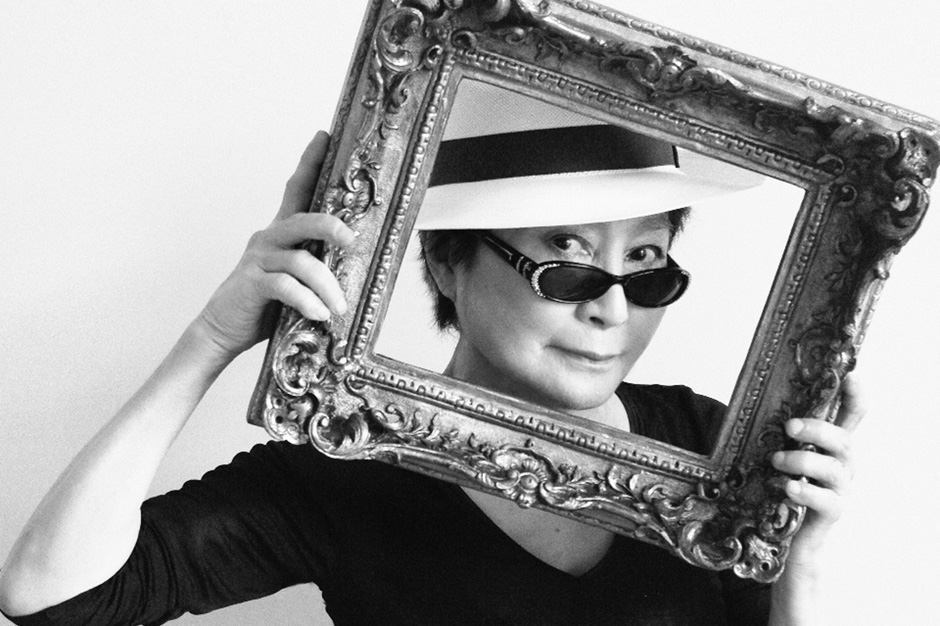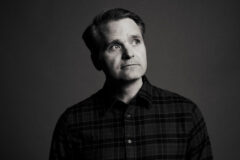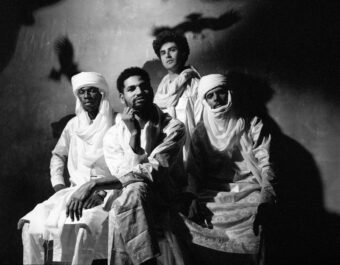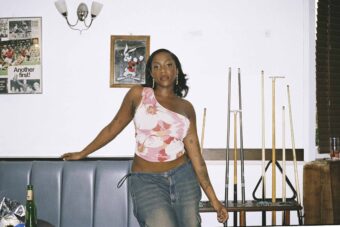In many ways, Yoko Ono has always been a permanent outsider. A classically trained musician and intellectual, the 82-year-old Japanese artist has spent decades creating conceptual work, avant-garde records, film, and organizing protests (recall her and husband John Lennon’s famous Bed-Ins For Peace). She was also one of the only women heavily involved in New York’s burgeoning “neo-Dada” Fluxus movement in the ’60s. Though many tend to immediately associate Ono through her prolific partnership with Lennon and its resulting tensions with the Beatles, it would be enormously reductive to overlook her contributions to the worlds of music and art. But like so many other forward-looking luminaries, her interloper status and maverick tendencies are precisely what draw younger experimentalists to her work — and, in some scenarios, her side.
Such is the case on her 2007 remix LP, which saw various artists rework material from Ono’s back catalog, Yes, I’m a Witch. Its forthcoming sequel, Yes, I’m a Witch Too (out February 19), features additional reimaginings, this time with Moby, Death Cab for Cutie, tUnE-yArDs , Miike Snow, Cibo Matto, her son Sean Lennon, and more. “All of [the covers and remixes] are pretty cool,” Ono wrote in an email to SPIN. “It shows how the times have changed. It wouldn’t have been like this when John was around. I wish he could listen to Yes, I’m a Witch Too. He would have loved it.”
In preparation for the record, we emailed with a handful of the artists whose work appears on Yes, I’m a Witch Too. Below, members of Miike Snow, Death Cab for Cutie, Cibo Matto, and Peter Bjorn & John (as well as veteran electronic producer Moby) talk about collaborating with Ono, and why they’re enamored with the living legend.
https://youtube.com/watch?v=5GXS2I9EgOY
Can you describe your first experience with Yoko Ono?
Moby: In 1987, I was in Central Park and found a huge mushroom — it was the size of a pumpkin. My friend and I carried it around and made a Super8 film about it. At one point Yoko walked by and said, “That’s a big mushroom.”
Andrew Wyatt, Miike Snow: Wow, that’s a tough question. That’s like asking what was my first exposure to the Easter Bunny or tomato soup. She’s always been there. The first time I specifically invested some time into her thing on its own was about ten years ago when I got the album Approximately Infinite Universe (1973) and then Fly (1971). I realized that a lot of what I was hearing in the old Williamsburg places like Death by Audio and Live With Animals was actually permutations of what she started. It was this whole other side to the story — her story, not filtered through your childhood impressions of the Beatles. She was seriously ahead of her time.
Jason McGerr, Death Cab for Cutie: Yoko was a household name before I started playing music, but I was too young to have much knowledge about her until I got John & Yoko’s [1984] Milk and Honey. The song “Nobody Told Me” drew me to the album, but then I heard how fearless her songs were and loved that approach. I’ll always gravitate towards music that’s panned left of center, and Ono fits that mold perfectly for me.
Miho Hatori, Cibo Matto: She was already a huge icon for Japanese people when I was born. I read her book Touch Me when I was high school. As a high-school student, it was an eye-opener. I could learn many things from her book about identity and gender issues — something school or our parents couldn’t teach us.
Yuka Honda, Cibo Matto: I went to see [the 1970 Beatles documentary] Let it Be in my local movie theater with my aunt. I didn’t even know who the Beatles were at the time. It was a riveting experience. For the first time, I saw a movie theater audience singing along to the film. That was the first time I experienced the magical power of music. But what impressed me the most from this film was not the amazing band playing amazing music, but the woman who had the same genetic trace [as me] on her, often just sitting there, emitting the inner light and keeping things in check.
https://youtube.com/watch?v=a-wSiMplfJQ
Peter Morén, Peter Bjorn & John: I’ve been a Beatle nut since I was six or seven, so obviously I knew about her through her influence on John. I got intrigued early on by the book collecting articles from Rolling Stone called The Ballad Of John & Yoko. I read that as a very young child — all stuff above my head, but it left an impression.
Then I listened to “Milk & Honey,” “Let Me Count the Ways,” and the B-side of “Instant Karma” called “Who Has Seen the Wind.” I got into Seasons of Glass [1981] and later the more abstract, “out-there” stuff. But a lot of it is exceptional, really. Like “Why,” and her Plastic Ono Band album. It was way before it’s time, wasn’t it? She also pushed John into that fantastic guitar playing. So she sort of invents Sonic Youth and later on she’s in line with the new-wave/post-punk scene.
I love her voice when she screams. It’s really intense and primal and connects with me. She still has it!
https://youtube.com/watch?v=DCb0TsSIqI0
Why did you want to be involved in this particular project, and how did you end up connected with it?
Andrew Wyatt, Miike Snow: Well, I believe her knowledge of us must’ve happened either through Sean [Lennon], whom I know, or through seeing us on Jools Holland. She was there playing with Basement Jaxx. As for wanting to be involved, the song “Catman” had elements that I thought would work well with Miike Snow’s aesthetic.
Moby: My friend Paul [Beahan] from Manimal [Ono’s label] asked me. And I have always appreciated Yoko’s contribution to everything from Fluxus to music to art to New York.
Jason McGerr, Death Cab for Cutie: We were honored that she had considered us to remix something from her catalog. I’d heard both Miike Snow and Peter Bjorn & John were submitting too, so it seemed like an amazing project to be a part of.
I’ve spent most of my life working towards playing an acoustic instrument, but I’ll be honest and say I love electronic music and programming beats. It’s inspiring to map out what you wish you could do behind a kit without physical or sonic limitations. So when the Yoko camp approached Death Cab about a remix, I jumped at the opportunity and sort of took the lead. Everyone contributed ideas or bits of music, but I put it all together in my laptop, mostly with headphones on long flights and bus rides.
Yuka Honda, Cibo Matto: Yoko called me. I would always want to be involved in any Yoko project. Nothing inspires me more.
Peter Morén, Peter Bjorn & John: It seemed like a dream project to me, getting Yoko’s vocal files from 1971 to mess around with as we pleased. We were first contacted at one of our shows in NYC from someone working with her. She had seen us on Leno (I think) and liked it.
Out of the songs we were offered, what I think attracted us to “Mrs. Lennon” is that it’s a spare piano ballad with a lovely chord sequence (that Alex Chilton later used for [Big Star’s] “Holocaust,” deliberately or not), a beautiful melody, and haunting lyrics, and the way her record was done makes it easy to hear things to add.
What would you like to bring to Ono’s legacy?
Moby: Appreciation and respect for someone who brought a spirit of Fluxus and peace to the culture at large.
Andrew Wyatt, Miike Snow: I think it’s wonderful that even at [almost] 83, Yoko is not about to stop experimenting with music and art.
Jason McGerr, Death Cab for Cutie: Our remix is definitely outside the Death Cab architecture, but my goal was to be fearless — like Yoko has been her whole life as an activist, artist, dreamer, musician, and cultural icon.
Peter Morén, Peter Bjorn & John: I do feel [our remix] is in line with classic Plastic Ono Band, and I’m proud of that. I met [Yoko] briefly at an opening she had for her [2012] exhibition at the Modern Museum in Stockholm and she told me we “had understood something.” If she’s happy, that’s enough.
https://youtube.com/watch?v=2kUPvREEoqE





